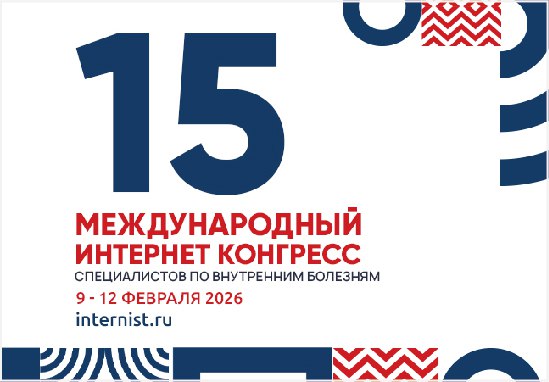Pleiotropic properties of direct oral anticoagulants — new therapeutic horizons
https://doi.org/10.20996/1819-6446-2025-3212
EDN: HXLSOY
Abstract
Direct oral anticoagulants (DOACs), including factor Xa inhibitors (rivaroxaban, apixaban, edoxaban) and the direct thrombin inhibitor dabigatran, are widely used for the prevention and treatment of thrombotic complications, particularly in patients undergoing major joint replacement, with atrial fibrillation (AF), as well as part of dual antithrombotic therapy (anticoagulant + antiplatelet) in patients after acute coronary syndrome and percutaneous coronary interventions, especially in the context of concomitant AF and an increased risk of systemic embolism. In recent years, there has been growing interest in studying the pleiotropic effects of DOACs that extend beyond their primary anticoagulant action on the hemostatic system. Accumulating experimental and clinical data suggest that these agents possess additional pharmacological properties — namely, anti-inflammatory, antiarrhythmic, and neuroprotective effects. The proposed molecular and cellular mechanisms include the reduction of proinflammatory cytokine levels, modulation of endothelial function, attenuation of oxidative stress, as well as favorable effects on myocardial remodeling processes and neurovascular protection. Such pleiotropic effects may play a significant pathophysiological role in slowing the progression of cardiovascular and cerebrovascular diseases, contributing to the reduction of complications and improvement of clinical outcomes. Understanding the pleiotropic properties of DOACs provides a foundation for their broader clinical application as part of integrated treatment strategies for cardiovascular, inflammatory, and cerebrovascular diseases. This review summarizes current data on the pleiotropic actions of oral anticoagulants and discusses their potential contribution to enhancing the effectiveness and individualization of pharmacotherapy in clinical cardiology.
About the Authors
P. A. DavtianRussian Federation
Paruir A. Davtian
Ufa
N. S. Zagidullin
Russian Federation
Naufal S. Zagidullin
Ufa
References
1. Durand M, Schnitzer ME, Pang M, et al.; Canadian Network for Observational Drug Effect Studies Investigators. Comparative effectiveness and safety of direct oral anticoagulants versus vitamin K antagonists in nonvalvular atrial fibrillation: a Canadian multicentre observational cohort study. CMAJ Open. 2020;8(4): E877-86. DOI:10.9778/cmajo.20200055.
2. Franchini M, Liumbruno GM, Bonfanti C, Lippi G. The evolution of anticoagulant therapy. Blood Transfus. 2016;14(2):175-84. DOI:10.2450/2015.0096-15.
3. Galyautdinov GS, Feiskhanova LI, Abdullaev ShP. Pleotropic effects of oral anticoagulants. Russian journal of hematology and transfusiology. 2019;64(1):90-8. (In Russ.) DOI:10.35754/0234-5730-2019-64-1-90-98.
4. Ballestri S, Romagnoli E, Arioli D, et al. Risk and management of bleeding complications with direct oral anticoagulants in patients with atrial fibrillation and venous thromboembolism: a narrative review. Adv Ther. 2023;40(1):41-66. DOI:10.1007/s12325-022-02333-9.
5. Hellfritzsch M., Adelborg K., Damkier P, et al. Effectiveness and safety of direct oral anticoagulants in atrial fibrillation patients switched from vitamin K antagonists: a systematic review and meta-analysis. Basic Clin Pharmacol Toxicol. 2020;126(1):21-31. DOI:10.1111/bcpt.13283.
6. Roguljić H, Arambašić J, Ninčević V, et al. The role of direct oral anticoagulants in the era of COVID-19: are antiviral therapy and pharmacogenetics limiting factors? Croat Med J. 2022;63(3):287-94. DOI:10.3325/cmj.2022.63.287.
7. Lee KH, Yeh JT, Wu ML, et al. Oral anticoagulants and cognitive impairment in patients with atrial fibrillation: a systematic review with meta-analysis and trial sequential analysis. Thromb Res. 2024;238:132-40. DOI:10.1016/j.thromres.2024.04.032.
8. Hindley B, Lip GYH, McCloskey AP, Penson PE. Pharmacokinetics and pharmacodynamics of direct oral anticoagulants. Expert Opin Drug Metab Toxicol. 2023;19(12):911-23. DOI:10.1080/17425255.2023.2287472.
9. Kearon C, Akl EA, Moores L, et al. Antithrombotic therapy for VTE disease: CHEST guideline and expert panel report. Chest. 2016;149(2):315-52. DOI:10.1016/j.chest.2015.11.026.
10. Chan YH, Lee KT, Kao YW, et al. The comparison of non-vitamin K antagonist oral anticoagulants versus well-managed warfarin with a lower INR target of 1.5 to 2.5 in Asian patients with non-valvular atrial fibrillation. PLoS One. 2019;14(3):e0213517. DOI:10.1371/journal.pone.0213517.
11. Connolly SJ, Ezekowitz MD, Yusuf S, et al.; RE-LY Steering Committee and Investigators. Dabigatran versus warfarin in patients with atrial fibrillation. N Engl J Med. 2009;361(12):1139-51. DOI:10.1056/NEJMoa0905561.
12. Patel MR, Mahaffey KW, Garg J, et al.; ROCKET AF Investigators. Rivaroxaban versus warfarin in nonvalvular atrial fibrillation. N Engl J Med. 2011;365(10):883-91. DOI:10.1056/NEJMoa1009638.
13. Granger CB, Alexander JH, McMurray JJ, et al.; ARISTOTLE Committees and Investigators. Apixaban versus warfarin in patients with atrial fibrillation. N Engl J Med. 2011;365(11):981-92. DOI:10.1056/NEJMoa1107039.
14. Boeva OI, Kokorin VA. Direct oral anticoagulants - a new standard in the treatment of diseases associated with thrombosis. Therapy. 2021;7(4):101-13. (In Russ.) DOI:10.18565/therapy.2021.4.101-113.
15. Macleod H, Copty N, Doherty D, et al. Direct Oral Anticoagulants Are Comparable to Low Molecular Weight Heparin at Sustaining the Circulating Extracellular Vesicle and Inflammatory Profiles of Cancer Associated Thrombosis Patients: An Observational Pilot Study. Cancer Med. 2025;14(9):e70920. DOI:10.1002/cam4.70920.
16. Zuo P, Zuo Z, Wang X, et al. Factor Xa induces pro-inflammatory cytokine expression in RAW 264.7 macrophages via protease-activated receptor-2 activation. Am J Transl Res. 2015;7(11):2326-34.
17. Shinozawa E, Nakayama M, Imura Y. TAK-442, a Direct Factor Xa Inhibitor, Inhibits Monocyte Chemoattractant Protein 1 Production in Endothelial Cells via Involvement of Protease-Activated Receptor 1. Front Pharmacol. 2018;9:1431. DOI:10.3389/fphar.2018.01431.
18. Bukowska A, Zacharias I, Weinert S, et al. Coagulation factor Xa induces an inflammatory signalling by activation of protease-activated receptors in human atrial tissue. Eur J Pharmacol. 2013;718(1-3):114-23. DOI:10.1016/j.ejphar.2013.09.006.
19. Borissoff JI, Spronk HM, ten Cate H. The hemostatic system as a modulator of atherosclerosis. N Engl J Med. 2011;364(18):1746–60. DOI:10.1056/NEJMra1011670.
20. Kondo H, Abe I, Fukui A, et al. Possible role of rivaroxaban in attenuating pressure-overload-induced atrial fibrosis and fibrillation. J Cardiol. 2018;71(3):310-9. DOI:10.1016/j.jjcc.2017.08.007.
21. Scott L, Li N, Dobrev D. Role of inflammatory signaling in atrial fibrillation. Int J Cardiol. 2019;287:195-200. DOI:10.1016/j.ijcard.2018.10.020.
22. Ellinghaus P, Perzborn E, Hauenschild P, et al. Expression of pro-inflammatory genes in human endothelial cells: Comparison of rivaroxaban and dabigatran. Thromb Res. 2016;142:44-51. DOI:10.1016/j.thromres.2016.04.008.
23. Goette A, Mollenhauer M, Rudolph V, et al. Pleiotropic effects of NOACs with focus on edoxaban: scientific findings and potential clinical implications. Herzschrittmacherther Elektrophysiol. 2023;34(2):142-52. DOI:10.1007/s00399-023-00944-5.
24. Cappato R, Ezekowitz MD, Klein AL, et al.; X-VeRT Investigators. Rivaroxaban vs. vitamin K antagonists for cardioversion in atrial fibrillation: the X-VeRT trial. Eur Heart J. 2014;35(47):3346-55. DOI:10.1093/eurheartj/ehu367.
25. Kirchhof P, Ezekowitz MD, Purmah Y, et al. Effects of Rivaroxaban on Biomarkers of Coagulation and Inflammation: A Post Hoc Analysis of the X-VeRT Trial. TH Open. 2020;4(1):e20-32. DOI:10.1055/s-0040-1701206.
26. Paar V, Jirak P, Gruber S, et al. Influence of dabigatran on pro-inflammatory cytokines, growth factors and chemokines - Slowing the vicious circle of coagulation and inflammation. Life Sci. 2020;262:118474. DOI:10.1016/j.lfs.2020.118474.
27. Lee MH, Koo J, Kwon H, et al. Early apixaban administration considering the size of infarction and functional outcome in acute ischemic stroke. Front Neurol. 2024;15:1302738. DOI:10.3389/fneur.2024.1302738.
28. Kanade GD, Pingale KD, Karpe YA. Activities of Thrombin and Factor Xa Are Essential for Replication of Hepatitis E Virus and Are Possibly Implicated in ORF1 Polyprotein Processing. J Virol. 2018;92(6):e01853-17. DOI:10.1128/JVI.01853-17.
29. Giannis D, Allen SL, Tsang J, et al. Postdischarge thromboembolic outcomes and mortality of hospitalized patients with COVID-19: the CORE-19 registry. Blood. 2021;137(20):2838-47. DOI:10.1182/blood.2020010529.
30. Ramacciotti E, Barile Agati L, Calderaro D, et al.; MICHELLE investigators. Rivaroxaban versus no anticoagulation for post-discharge thromboprophylaxis after hospitalisation for COVID-19 (MICHELLE): an open-label, multicentre, randomised, controlled trial. Lancet. 2022;399(10319):50-9. DOI:10.1016/S0140-6736(21)02392-8.
31. Motloch LJ, Jirak P, Mirna M, et al. Early antithrombotic post-discharge therapy using prophylactic DOAC or dipyridamole improves long-term survival and cardiovascular outcomes in hospitalized COVID-19 survivors. Front Cardiovasc Med. 2022;9:916156. DOI:10.3389/fcvm.2022.916156.
32. Zemer-Wassercug N, Haim M, Leshem-Lev D, et al. The effect of dabigatran and rivaroxaban on platelet reactivity and inflammatory markers. J Thromb Thrombolysis. 2015;40(3):340-6. DOI:10.1007/s11239-015-1245-z. Erratum in: J Thromb Thrombolysis. 2015;40(4):523. DOI:10.1007/s11239-015-1271-x.
33. Mele M, Mele A, Imbrici P, et al. Pleiotropic Effects of Direct Oral Anticoagulants in Chronic Heart Failure and Atrial Fibrillation: Machine Learning Analysis. Molecules. 2024;29(11):2651. DOI:10.3390/molecules29112651.
34. Atzemian N, Kareli D, Ragia G, Manolopoulos VG. Distinct pleiotropic effects of direct oral anticoagulants on cultured endothelial cells: a comprehensive review. Front Pharmacol. 2023;14:1244098. DOI:10.3389/fphar.2023.1244098.
35. Fiedler L, Motloch LJ, Dieplinger AM, et al. Prophylactic rivaroxaban in the early post-discharge period reduces the rates of hospitalization for atrial fibrillation and incidence of sudden cardiac death during long-term follow-up in hospitalized COVID-19 survivors. Front Pharmacol. 2023;14:1093396. DOI:10.3389/fphar.2023.1093396.
36. Gupta A, Watkins A, Thomas P, et al. Coagulation and inflammatory markers in Alzheimer’s and vascular dementia. Int J Clin Pract. 2005;59(1):52-7. DOI:10.1111/j.1742-1241.2004.00143.x.
37. Bezabhe WM, Bereznicki LR, Radford J, et al. Oral anticoagulant treatment and the risk of dementia in patients with atrial fibrillation: A population-based cohort study. J Am Heart Assoc. 2022;11(7):e023098. DOI:10.1161/JAHA.121.023098.
38. Zhang C, Gu ZC, Shen L, et al. Non-vitamin K Antagonist Oral Anticoagulants and Cognitive Impairment in Atrial Fibrillation: Insights From the Meta-Analysis of Over 90,000 Patients of Randomized Controlled Trials and Real-World Studies. Front Aging Neurosci. 2018;10:258. DOI:10.3389/fnagi.2018.00258.
39. Bian Z, Liu X, Feng T, et al. Protective Effect of Rivaroxaban Against Amyloid Pathology and Neuroinflammation Through Inhibiting PAR-1 and PAR-2 in Alzheimer’s Disease Mice. J Alzheimers Dis. 2022;86(1):111-23. DOI:10.3233/JAD-215318.
40. Graff-Radford J, Lesnick T, Rabinstein AA, et al. Cerebral Microbleeds: Relationship to Antithrombotic Medications. Stroke. 2021;52(7):2347-55. DOI:10.1161/STROKEAHA.120.031515.
41. Grossmann K. Direct Oral Anticoagulants (DOACs) for Therapeutic Targeting of Thrombin, a Key Mediator of Cerebrovascular and Neuronal Dysfunction in Alzheimer’s Disease. Biomedicines. 2022;10(8):1890. DOI:10.3390/biomedicines10081890.
42. January CT, Wann LS, Calkins H, et al. 2019 AHA/ACC/HRS Focused Update on the Management of Patients With Atrial Fibrillation: А Report of the American College of Cardiology/American Heart Association Task Force on Clinical Practice Guidelines and the Heart Rhythm Society. J Am Coll Cardiol. 2019;74(1):104-32. DOI:10.1016/j.jacc.2019.01.011. Erratum in: J Am Coll Cardiol. 2019;74(4):599. DOI:10.1016/j.jacc.2019.06.034.
43. Ruff CT, Giugliano RP, Braunwald E, et al. Comparison of the efficacy and safety of new oral anticoagulants with warfarin in patients with atrial fibrillation: a meta-analysis of randomised trials. Lancet. 2014;383(9921):955-62. DOI:10.1016/S0140-6736(13)62343-0.
44. Hara T, Fukuda D, Tanaka K, et al. Rivaroxaban, a novel oral anticoagulant, attenuates atherosclerotic plaque progression and destabilization in ApoEdeficient mice. Atherosclerosis. 2015;242(2):639-46. DOI:10.1016/j.atherosclerosis.2015.03.023.
45. Sriram K, Insel PA. Inflammation and thrombosis in COVID-19 pathophysiology: proteinase-activated and purinergic receptors as drivers and candidate therapeutic targets. Physiol Rev. 2021;101(2):545-67. DOI:10.1152/physrev.00035.2020.
46. Cortes-Canteli M, Kruyer A, Fernandez-Nueda I, et al. Long-Term Dabigatran Treatment Delays Alzheimer’s Disease Pathogenesis in the TgCRND8 Mouse Model. J Am Coll Cardiol. 2019;74(15):1910-23. DOI:10.1016/j.jacc.2019.07.081.
47. Caramelli B, Yu PC, Cardozo FAM, et al. Effects of dabigatran versus warfarin on 2-year cognitive outcomes in old patients with atrial fibrillation: results from the GIRAF randomized clinical trial. BMC Med. 2022;20(1):374. DOI:10.1186/s12916-022-02563-2.
48. Jun M, Scaria A, Andrade J, et al. Kidney function and the comparative effectiveness and safety of direct oral anticoagulants vs. warfarin in adults with atrial fibrillation: a multicenter observational study. Eur Heart J Qual Care Clin Outcomes. 2023;9(6):621-31. DOI:10.1093/ehjqcco/qcac069.
Review
For citations:
Davtian P.A., Zagidullin N.S. Pleiotropic properties of direct oral anticoagulants — new therapeutic horizons. Rational Pharmacotherapy in Cardiology. 2025;21(4):396-403. (In Russ.) https://doi.org/10.20996/1819-6446-2025-3212. EDN: HXLSOY
















































